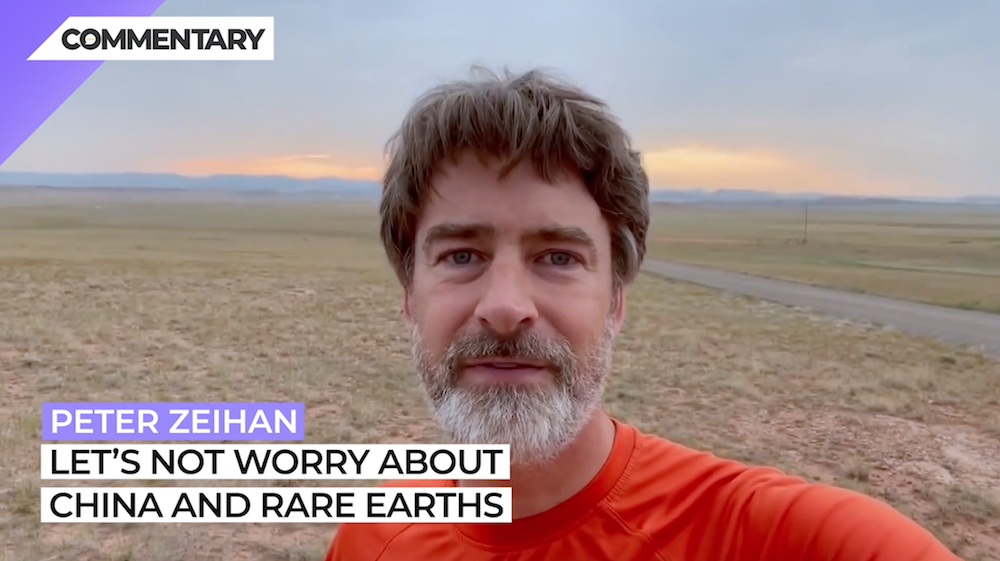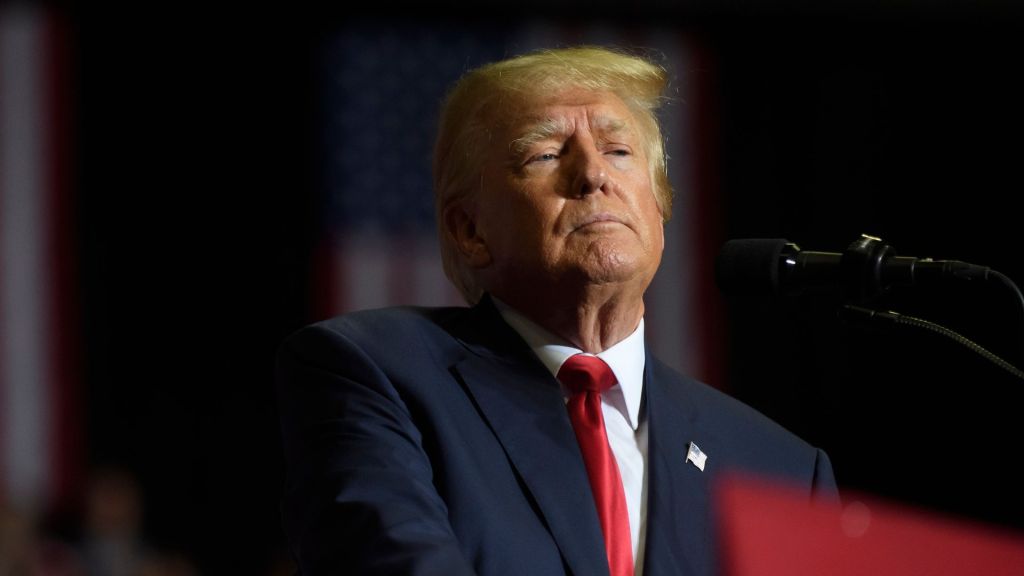
Commentary
-
Our commentary partners will help you reach your own conclusions on complex topics.
Hey everybody, Peter Zeihan here coming to you from the great wilds and wide opens of Wyoming.
A few of you wrote in about rare earths, which are a series of materials that are used in everything from petroleum refining, to semiconductors, to safety, glass, to sunglasses.
There’s a little bit in pretty much any sort of modern industrial product and with everything with the Chinese going to hell, there is a concern that there’s a trade issue in a national security issue here.
Right now, the Chinese are responsible for producing about 90% of the world’s rare earth metals that are then used in everything else. So if relations with the Chinese really do tank or the trade system falls apart, are we then in a shortage? This is something I spend a lot of time not worrying about at all. A couple of things to keep in mind.
First of all, rare earths, aren’t rare. They are a by-product of metal mining, particularly lead and silver and copper. The problem is with processing. So for example, here in Wyoming, there’s probably enough rare earth for everything that the United States needs for decades to come. It’s also capable of being produced in Texas and Arkansas and New York and California and Colorado.
We have plenty, but they react very similarly when you try to refine them and you have to separate them out first from the, or, and then from one another, that takes a series of hundreds of acid bass to increase the concentrations of what you’re after. And that takes months just to get a few ounces of a stuff. So how this has gone down is the Chinese subsidize everything that they can technically command in order to ensure their population has as many jobs as possible.
They’ve done this for rare earth, just like they’ve done it for everything else. And so by the time we got to the 1990s, the Chinese had been dumping so much money into this industry that they had driven down the price of rare earth through overproduction.
In the 1990s prices for rare earths dropped by about three quarters. And they’ve never really bounced back in that sort of environment. You’ve got a very different cost structure and it drove a lot of the more traditional producers in the United States, in Europe, in Asia, out of business, but the Chinese never stopped over producing. They simply kept going. And so we were able to make a shift to a high-tech telephone commuting system, much more quickly and much more cheaply than we would have been able to otherwise.
And the second that the Chinese started to use this as a geopolitical issue, we found ways to get by without. So while global demand for rare earth has increased over the course of the last 20, 25 years, the concentration of those rare earths in the American system and the global system is actually gone down per unit of output.
Remember when we made the shift from hard drives to solid state drives? That was about the time the Chinese started to beat jerks about this issue. And so we started using less and that gave a solid state, which uses very few rare earths. Now, again, the issue is processing.
You have to build the infrastructure with that issue, having to build the infrastructure, knowing that they’re not rare. Everyone who uses rare earth in numbers has learned the lesson of the Chinese intervening in the market a long time ago. So everybody has six months to a year of reserves built up. In addition to having some savings programs in place in case they need to suddenly do make do with less.
So there’s a buffer. In addition, Malaysia, Australia, the United States, and others have gone ahead and invested in a lot of the infrastructure that we would need to produce rare earth in mass. Now there will be a lag to spin this up of six to 12 months. So if the Chinese were to vanish from the world tomorrow and take the rare earths with them, we would have a period of tightness that would last no more than a year. And then we’d be fine. This is not something I worry about. Next time we’ll talk about something I do. until then…
-
Hurricane Helene hits US coast, Appalachia and beyond
Hurricane Helene hit Florida and Georgia overnight between Sept. 26 and 27 as a Category 4 hurricane, and accompanying storms will continue reaching deeper into the continental United States today. Dangerous flash flooding from the hurricane, known as storm surge, was some of the worst flooding that the Tampa Bay area has ever seen, and… -
Israel holds upper hand against Lebanon, Hezbollah and Iran
On Wednesday, Sept. 25, Hezbollah launched a ballistic missile at Tel Aviv in retaliation for Israel’s explosive pager attack that blew up devices across Lebanon. Although Israel’s defense systems intercepted the surface-to-surface missile, the attempted strike on Tel Aviv marked a significant escalation by Hezbollah. Since the siege on Gaza began, shortly after the Oct. 7, 2023,… -
The Sinaloa Cartel civil war
Fears of a civil war within the Sinaloa Cartel are growing as violence between competing factions within the cartel continues. The Mexican Army has dispatched around 600 elite troops to Sinaloa to help quell those fears, in addition to roughly 2,200 regular soldiers and National Guard. Watch the above video as Straight Arrow News contributor… -
New Ukrainian weapons hit Russia where it hurts
Ukrainian drones struck a major Russian ammunition depot, triggering a massive explosion that was captured on camera. According to the Ukrainian military, 2,000 tons of munitions had arrived at the depot before the attack. Over the past two years, Ukraine has significantly increased its domestic drone production, allowing it to scale up attacks on military… -
Weighing social costs vs. economic benefits on immigration
Global human migration is one of the defining elements of our current historical era, according to the United Nations. Migrants face both the incentives to leave — forced out by climate change, crime and corruption, extreme poverty or violence — and incentives for where to go, based on available job opportunities and so on. Migration…
Latest Stories
-
 Getty Images
Getty Images
Meta considering moving incorporation from Delaware: Report
-
 Getty Images
Getty Images
Medical jet carrying pediatric patient crashes in Philadelphia neighborhood
-
 AP Images
AP Images
Federal Reserve adviser charged with ‘economic espionage’ for helping China
-
 Getty Images
Getty Images
Crashed US Army Black Hawk did ‘not have any AI capability’
-
 Getty Images
Getty Images
GOP lawmakers introduce SHUSH Act to ease firearm suppressor regulations
Popular Opinions
-
In addition to the facts, we believe it’s vital to hear perspectives from all sides of the political spectrum.
Latest Opinions
In addition to the facts, we believe it’s vital to hear perspectives from all sides of the political spectrum. We hope these different voices will help you reach your own conclusions.
The opinions published in this section are solely those of the contributors and do not reflect the views of Straight Arrow News.





















Latest Commentary
We know it is important to hear from a diverse range of observers on the complex topics we face and believe our commentary partners will help you reach your own conclusions.
The commentaries published in this section are solely those of the contributors and do not reflect the views of Straight Arrow News.
Dr. Frank Luntz
Pollster and Political Analyst‘A disturbing pick’: Americans debate Musk, Trump’s cabinet picks
‘Dysfunctional’: Americans share criticisms of Congress
‘Instill optimism’: Americans on how future generations can succeed